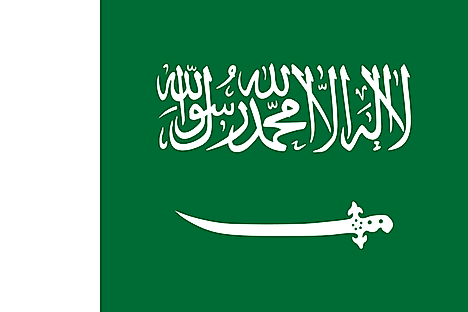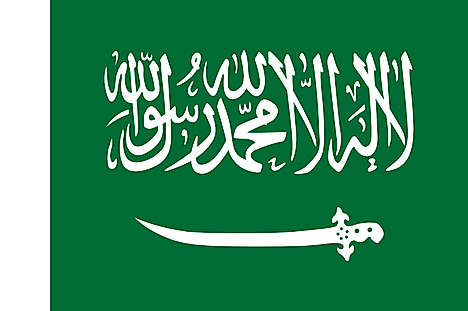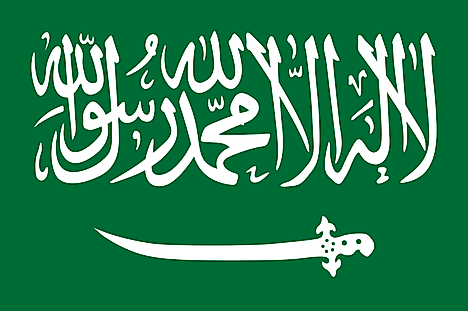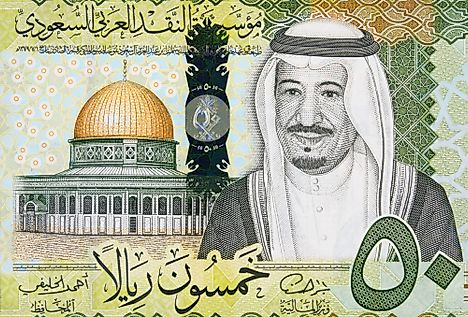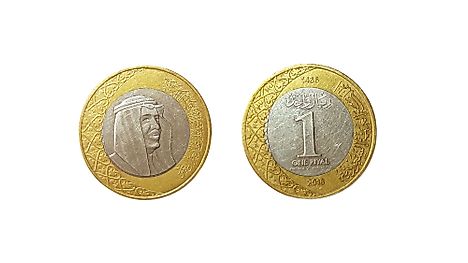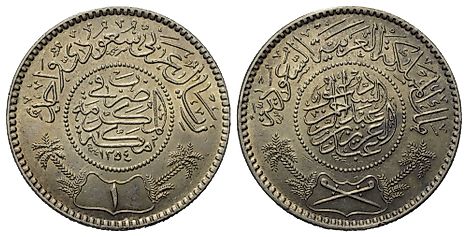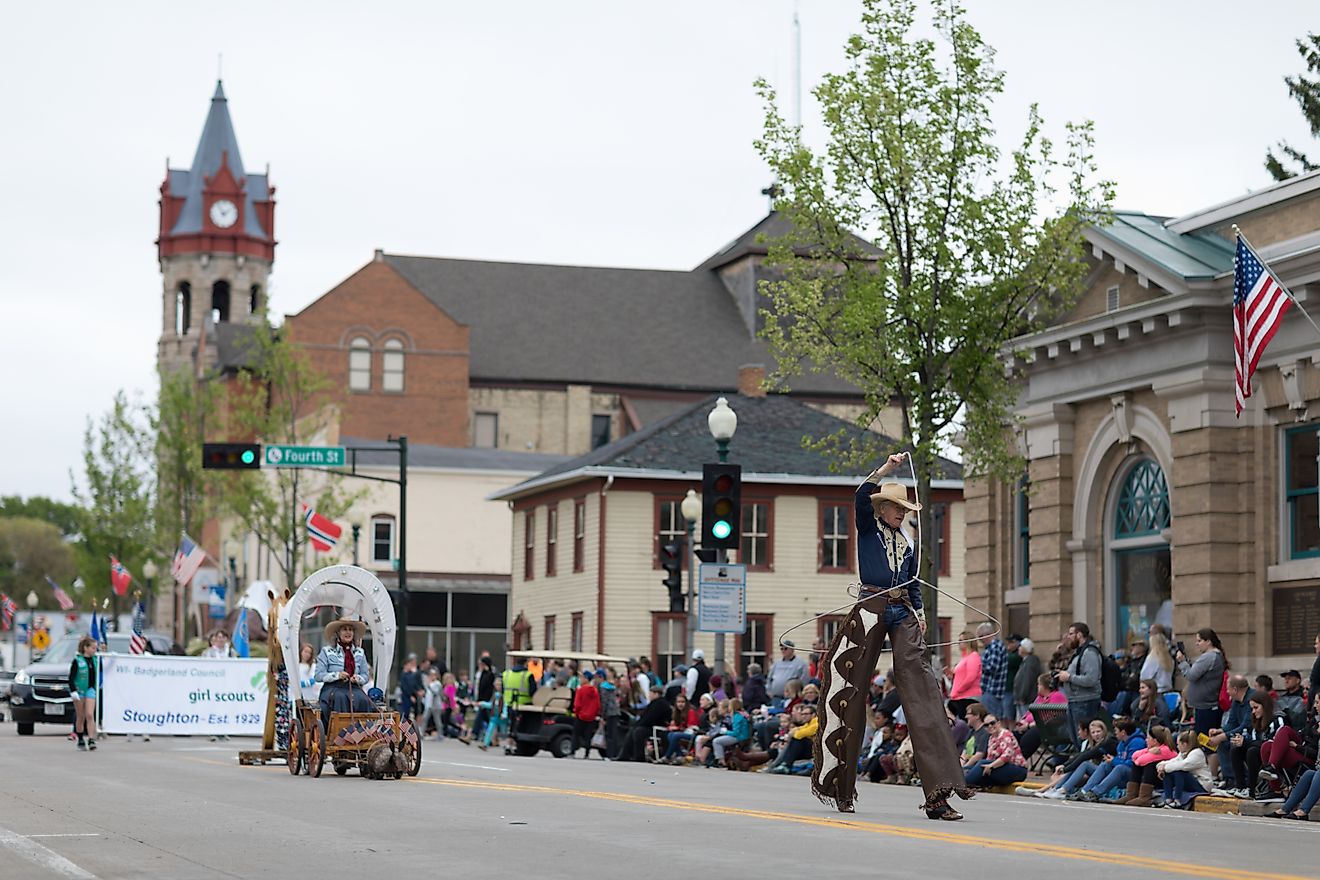Flags, Symbols & Currency of Saudi Arabia
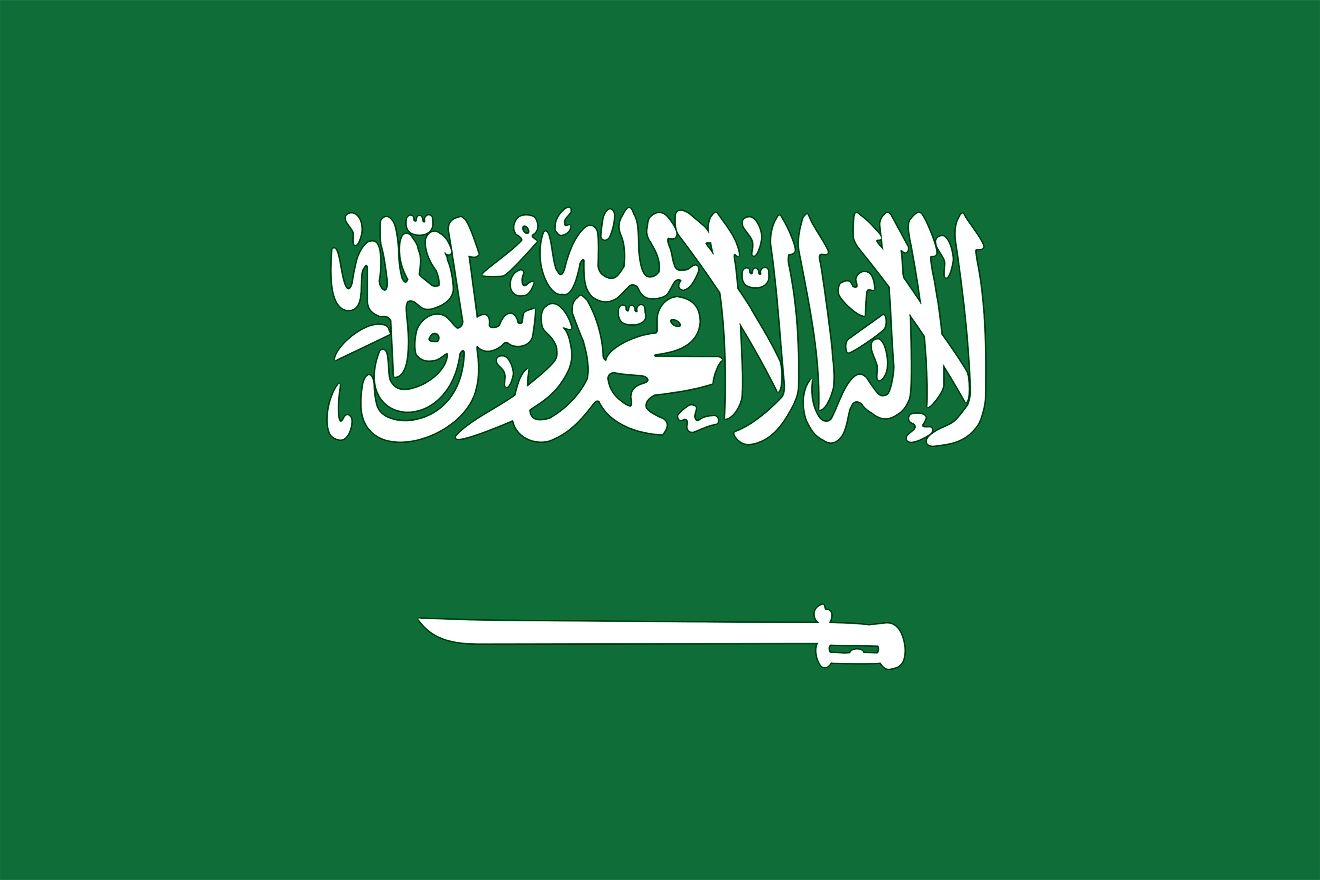
The National Flag of Saudi Arabia was officially adopted on March 15, 1973.
The National Flag of Saudi Arabia features a green background with the Shahada or Muslim creed in large white Thuluth script (translated as "There is no god but Allah; Muhammad is the Messenger of Allah") placed above a white horizontal sword, whose tip points to the hoist side of the flag. The flag has an identical design on the obverse and the reverse sides to ensure that the Shahada is read properly from either side of the flag. The green color of the flag honors the country's puritanical Muslim Wahabi sect and also being the favorite color of Prophet Muhammad, it is strongly associated with the religion of Islam. The Shahada is a declaration of faith in Islam. The sword in the flag symbolizes the strictness with which justice is ensured in the country. The flag has a width-to-length ratio of 2:3.
History of The Flag of Saudi Arabia
The ruling Al Saud family of the nation is closely linked with the family of Al ash-Sheikh, the leading religious family in the country. Together, the two families control the country’s political and religious scene. The relation between these two families developed when Muhammad ibn Abd al-Wahhab (whose descendants comprise the Al ash-Sheikh family) helped Al Saud to establish the Kingdom of Saudi Arabia in 1932. The Shahada had been formerly using the flag used by the religious family and the sword was later added by Al Saud to create the national flag of Saudi Arabia. Some variants of the flag were used till March 15, 1973, when the current version of the country’s flag was formally adopted. Earlier, a variant with a vertical white stripe at the hoist end and another variant with two swords had been used. By 1938, the flag was almost identical to the modern-day flag of Saudi Arabia. However, the sword was then more curved and the shahada and sword occupied more of the space of the flag.
Symbols of Saudi Arabia
The National Coat of Arms of Saudi Arabia
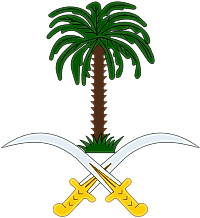
The National Coat of Arms/Emblem of Saudi Arabia was adopted in 1950. It is composed of two crossed swords, placed below a palm tree. The two crossed swords represent the kingdoms of Hijaz and the Sultanate of Najd. The swords also symbolize justice. The palm tree symbolizes prosperity and represents the assets of the Kingdom, which are in turn guarded by the two crossed swords.
National Motto
"There is no god but Allah; Muhammad is the Messenger of Allah"
National Anthem
- Anthem Title: an-Našīd al-Waṭanī as-Saʿūdī ("National Anthem of the Kingdom of Saudi Arabia" )
- Music Composer: Abdul Rahman Al-Khateeb
- Lyricist: Ibrahim Khafaji
- Date of Adoption: June 29, 1984
an-Našīd al-Waṭanī as-Saʿūdī ("National Anthem of the Kingdom of Saudi Arabia" ) is the national anthem of Saudi Arabia. The music of the anthem have been composed by Abdul Rahman Al-Khateeb. The lyrics of the anthem have been authored by Ibrahim Khafaji. The anthem was officially adopted on June 29, 1984.
النشيد الوطني السعودي (Arabic)
سارعي للمجد والعلياء
مجدي لخالق السماء
وارفعي الخفاق اخضر
يحمل النور المسطر
رددي الله اكبر
يا موطني
موطني قد عشت فخر المسلمين
عاش المليك للعلم والوطن
"National Anthem of Saudi Arabia"
Hasten to glory and supremacy!
Glorify the Creator of the heavens
And raise the green, fluttering flag,
Carrying the emblem of Light!
Repeat – God is greatest!
O my country,
My country, may you always live,
The glory of all Muslims!
Long live the King,
For the flag and the country!
The Currency of Saudi Arabia is the Saudi riyal
The current official currency used in the Kingdom of Saudi Arabia is Saudi riyal (SAR). The Saudi riyal is made up of subunits known as halalas where 1 riyal is equivalent to 100 halalas. The Saudi riyal was introduced in 1925 and replaced the Hejaz riyal at par. The issuance and circulation of the Saudi riyal are regulated by the Saudi Arabian Monetary Authority. The Saudi riyal is issued in coinage as well as in banknotes.
Coins
Currently, coins in denominations of 2, 1, 0.50, 0.25, 0.10, 0.05, and 0.01 riyal are in circulation.
Banknotes
Currently, notes in denominations of 500, 200, 100, 50, 20, 10, 5,1 riyal are in circulation.
Historical currencies of Saudi Arabia
Maria Theresa Thaler was an Austrian currency which was used extensively in the 18th and 19th centuries in Saudi Arabia where it was locally known as the “Alriyal Alfransi” or the “French Riyal.” The Maria Theresa thaler was issued exclusively in coinage and was minted in silver coins. Due to its accurate weight (a single Thaler coin weighed one ounce); the Maria Theresa thaler was also used as a weighing unit in local markets. Saudi merchants preferred using the Thaler over other existing currencies due to its circulation in many neighbouring countries.
The Ottoman Kurus was the official currency used in the Ottoman Empire which Saudi Arabia was a part of. The Kurus were issued from the Ottoman capital, Constantinople (present-day Istanbul) and was originally minted in large silver coins. However, the Kurus were not as popular among Saudi residents as other currencies such as the Maria Theresa thaler.
The Hejaz riyal was the original currency used in Saudi Arabia when the kingdom was known as the Kingdom of Hejaz. The riyal was introduced in 1916 by the royal decree of King Hussein bin Ali to become the official currency of the Kingdom. The value of one riyal was equivalent to 22 Ottoman kurus. The Hejaz riyal was made up of subunits known as qirsh, with 1 riyal being equivalent to 20 qirshes. This currency was minted exclusively in coinage and was issued in 20, 10, 5, 1, a quarter, a half, an eighth qirsh and 1-dinar denominations. The 20, 10, and five qirsh coins were issued in silver coins while 1-dinar coins were minted on gold coins. One, half, quarter, and eighth qirsh coins were minted in bronze coins. The Hejaz riyal was replaced in 1925 by the Saudi riyal at par.
